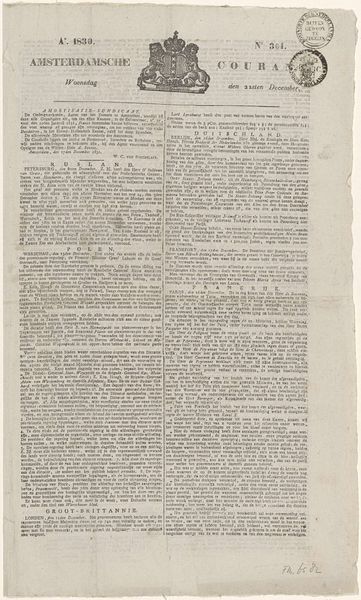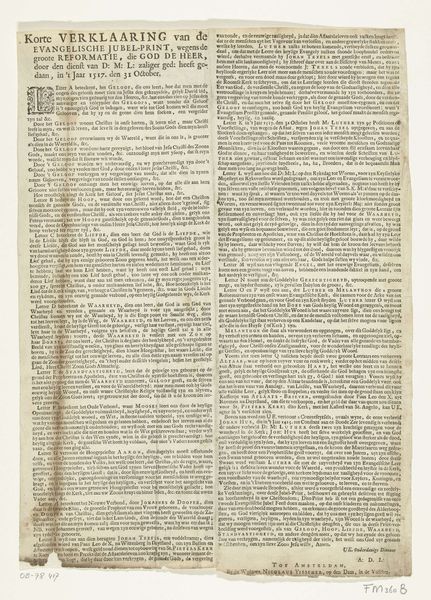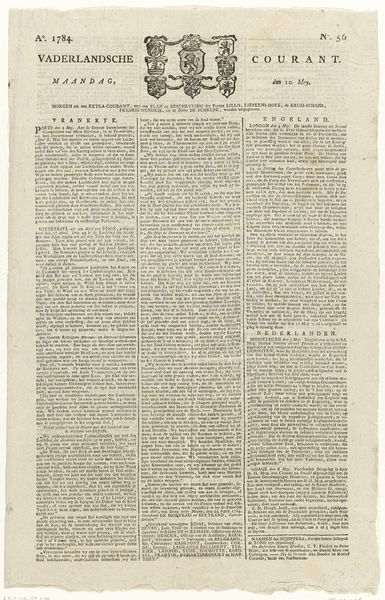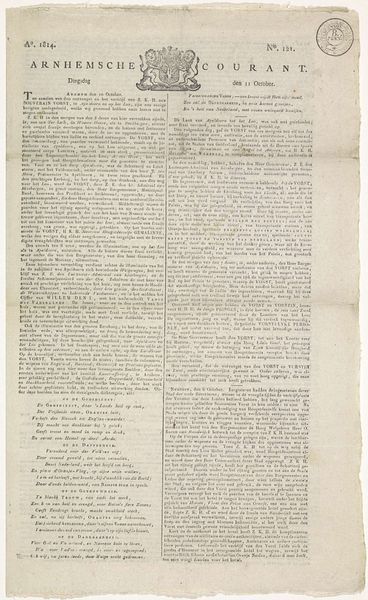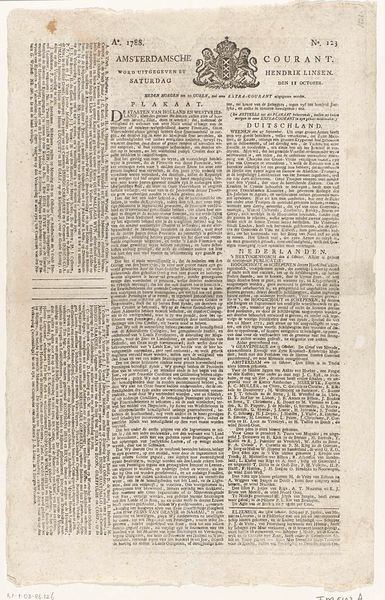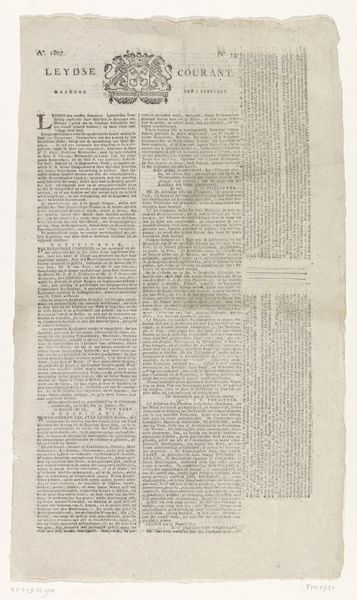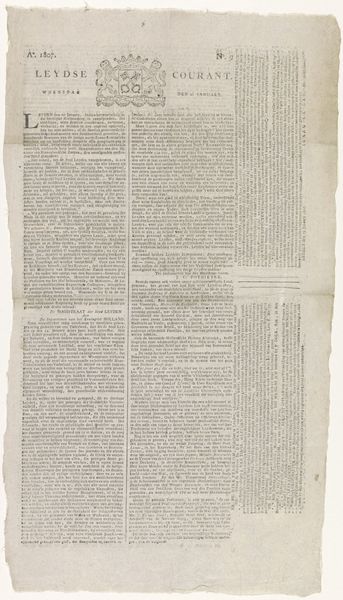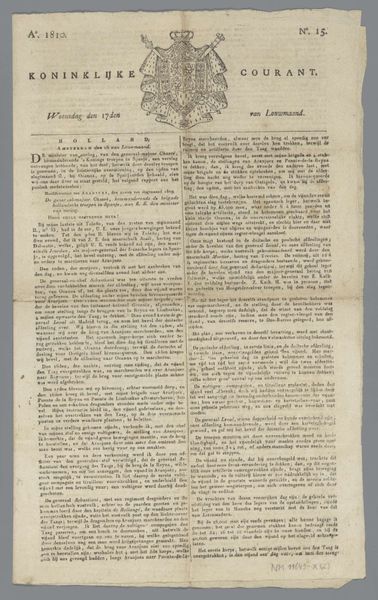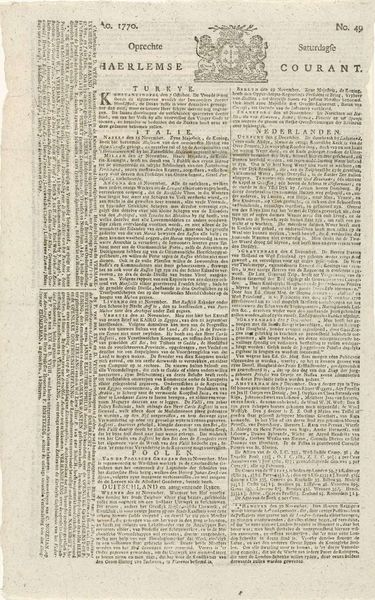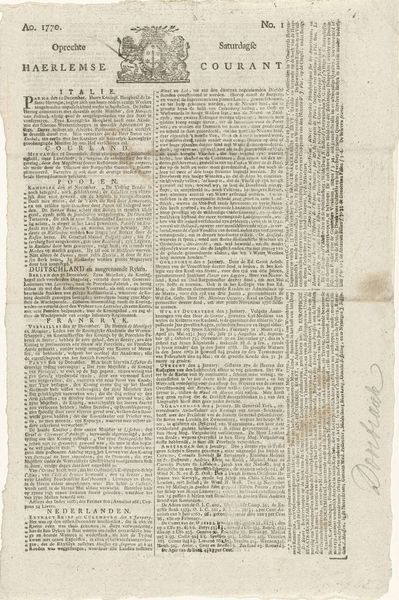
graphic-art, print, typography
#
graphic-art
#
aged paper
#
dutch-golden-age
# print
#
old engraving style
#
hand drawn type
#
personal sketchbook
#
typography
#
journal
#
fading type
#
thick font
#
handwritten font
#
word imagery
#
columned text
Dimensions: height 410 mm, width 250 mm
Copyright: Rijks Museum: Open Domain
This is the Amsterdamsche Extra-Courant of 22 November 1785, printed by Hendrik Linsen. At its head, we see a heraldic crest, a symbol laden with meanings of power, lineage, and national identity. Such emblems, resonating with ancient traditions, echo across time. In medieval tapestries, the crest signified noble houses, while in modern state seals, it embodies national pride and authority. The lion, a recurring motif, speaks of courage and dominion. Consider how the lion, in ancient Mesopotamian art, guarded temples and palaces, its roar a symbol of strength and protection. These symbols, steeped in collective memory, tap into our subconscious associations. The crest, whether on a medieval banner or a modern document, evokes a profound emotional connection to history and belonging. It is a visual shorthand, instantly communicating complex ideas of identity and power. The crest’s cyclical journey reflects our own— constantly evolving, yet tethered to enduring cultural symbols, resurfacing in new forms, and speaking to the depths of our shared human experience.
Comments
No comments
Be the first to comment and join the conversation on the ultimate creative platform.

